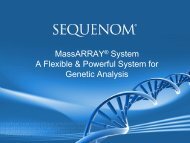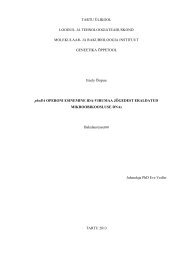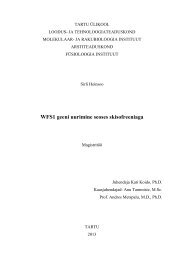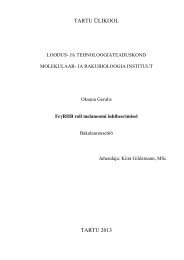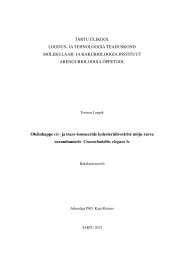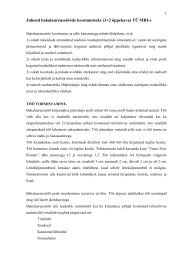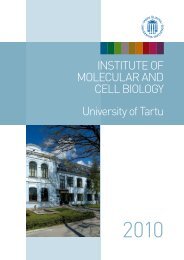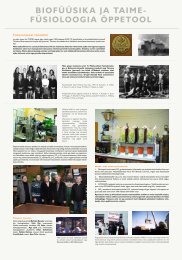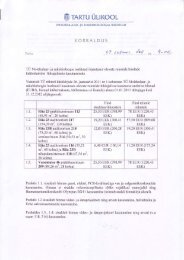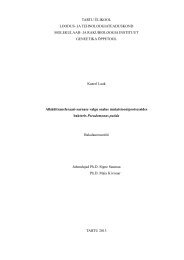Ureaplasmad ja laktobatsillid viljatute paaride suguteede ...
Ureaplasmad ja laktobatsillid viljatute paaride suguteede ...
Ureaplasmad ja laktobatsillid viljatute paaride suguteede ...
You also want an ePaper? Increase the reach of your titles
YUMPU automatically turns print PDFs into web optimized ePapers that Google loves.
Ureaplasmas and lactobacilli in the genital tract microbiota of infertile couples and<br />
influence of sexual intercourse on vaginal microbial community<br />
Riinu Kiiker<br />
SUMMARY<br />
Infertility has been associated with the presence of some bacterial species and<br />
microecological disturbances in the genital tract. Since infertility affects both partners,<br />
then it is neccessary to study them in parallel and assess the direct impact of sexual<br />
intercourse on female genital tract.<br />
In the present study the genital tract microbiota of infertile couples was profiled by<br />
sequencing the V6 region of 16S rRNA by applying Illumina paired-end protocol on<br />
HiSeq 2000 platform. Furthermore, abundance and prevalence of two ureaplasma<br />
species (U. urealyticum, U. parvum) and two potentially beneficial lactobacillus species<br />
(L. iners, L. crispatus) and their changes in relation to sexual intercourse were assessed<br />
using quantitative PCR.<br />
Vaginal microbiota consisted mainly of Lactobacillus spp. (L. iners, L. crispatus), but<br />
also Gardnerella vaginalis, Veillonella sp., Porphyromonas spp., Prevotella spp.,<br />
Atopobium vaginae and others. Ureaplasma spp. (U. parvum more often than U.<br />
urealyticum) were present in every second vaginal microbial community.<br />
Abundance of L. iners and U. parvum increased while that of L. crispatus and U.<br />
urealyticum abundance decreased after sexual intercourse. L. iners dominated<br />
communities were persistent, while L. crispatus dominated communities were less<br />
stable. After intercourse the prevalence of Streptococcus spp., Porphyromonas spp.,<br />
Anaerococcus sp. increased and Lactobacillus spp. except L. iners, A. vaginae,<br />
Enterobacteriaceae sp., Dialister sp., Bacteroides ureaolyticum and Leptotrichia<br />
amnionii decreased. Nugent score increased in more than half of the vaginal samples.<br />
Bacterial communities of semen were less abundant while more diverse than the vaginal<br />
communities. Lactobacillus spp., Flavobacterium sp., G. vaginalis and Porphyromonas<br />
spp. were very common in all the semen samples. There were more Enterobacteriaceae<br />
sp., Prevotella spp., Bacteroides ureolyticus, Streptococcus spp., Sphingobacteriales sp.<br />
59



